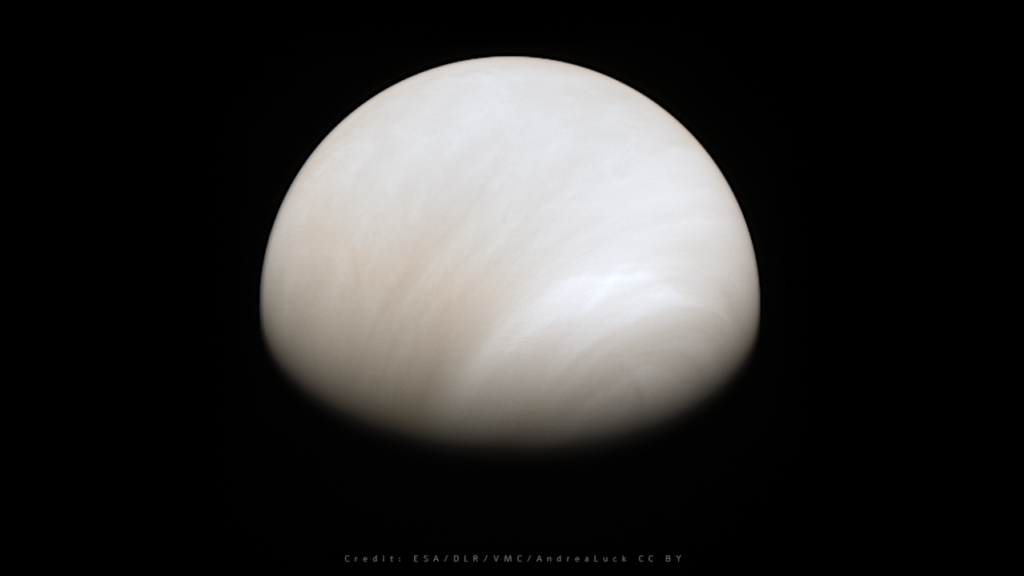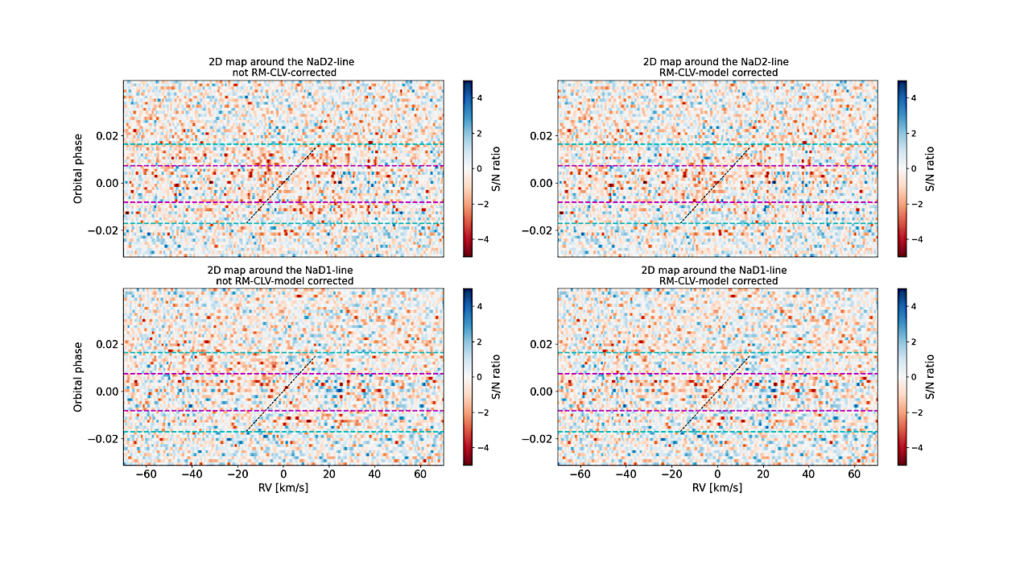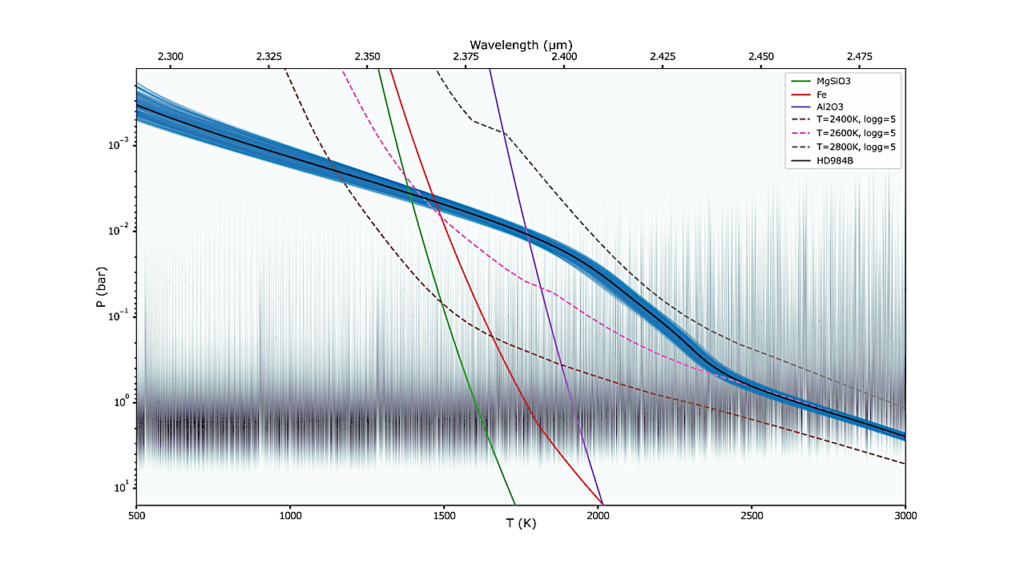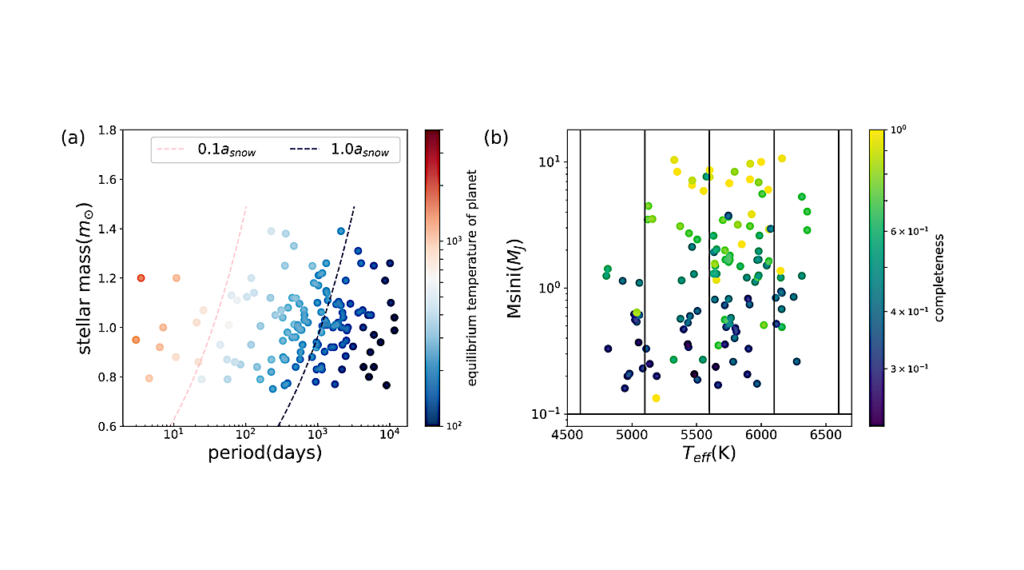The CARMENES Search For Exoplanets Around M Dwarfs. Three Temperate To Warm Super-Earths

We announce the discovery of two planets orbiting the M dwarfs GJ 251 (0.360±0.015 M⊙) and HD 238090 (0.578±0.021 M⊙) based on CARMENES radial velocity (RV) data.
In addition, we independently confirm with CARMENES data the existence of Lalande 21185 b, a planet that has recently been discovered with the SOPHIE spectrograph. All three planets belong to the class of warm or temperate super-Earths and share similar properties. The orbital periods are 14.24 d, 13.67 d, and 12.95 d and the minimum masses are 4.0±0.4 M⊕, 6.9±0.9 M⊕, and 2.7±0.3 M⊕ for GJ 251 b, HD 238090 b, and Lalande 21185 b, respectively.
Based on the orbital and stellar properties, we estimate equilibrium temperatures of 351.0±1.4 K for GJ 251 b, 469.6±2.6 K for HD 238090 b, and 370.1±6.8 K for Lalande 21185 b. For the latter we resolve the daily aliases that were present in the SOPHIE data and that hindered an unambiguous determination of the orbital period. We find no significant signals in any of our spectral activity indicators at the planetary periods.
The RV observations were accompanied by contemporaneous photometric observations. We derive stellar rotation periods of 122.1±2.2 d and 96.7±3.7 d for GJ 251 and HD 238090, respectively. The RV data of all three stars exhibit significant signals at the rotational period or its first harmonic. For GJ 251 and Lalande 21185, we also find long-period signals around 600 d, and 2900 d, respectively, which we tentatively attribute to long-term magnetic cycles. We apply a Bayesian approach to carefully model the Keplerian signals simultaneously with the stellar activity using Gaussian process regression models and extensively search for additional significant planetary signals hidden behind the stellar activity.
S. Stock, E. Nagel, J. Kemmer, V. M. Passegger, S. Reffert, A. Quirrenbach, J. A. Caballero, S. Czesla, V. J. S. Béjar, C. Cardona, E. Díez-Alonso, E. Herrero, S. Lalitha, M. Schlecker, L. Tal-Or, E. Rodríguez, C. Rodríguez-López, I. Ribas, A. Reiners, P. J. Amado, F. F. Bauer, P. Bluhm, M. Cortés-Contreras, L. González-Cuesta, S. Dreizler, A. P. Hatzes, Th. Henning, S. V. Jeffers, A. Kaminski, M. Kürster, M. Lafarga, M. J. López-González, D. Montes, J. C. Morales, S. Pedraz, P. Schöfer, A. Schweitzer, T. Trifonov, M. R. Zapatero Osorio, M. Zechmeister
Comments: Accepted for publication in A&A
Subjects: Earth and Planetary Astrophysics (astro-ph.EP); Instrumentation and Methods for Astrophysics (astro-ph.IM); Solar and Stellar Astrophysics (astro-ph.SR)
Cite as: arXiv:2010.00474 [astro-ph.EP] (or arXiv:2010.00474v1 [astro-ph.EP] for this version)
Submission history
From: Stephan Stock
[v1] Thu, 1 Oct 2020 15:07:07 UTC (42,769 KB)
https://arxiv.org/abs/2010.00474
Astrobiology,








